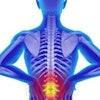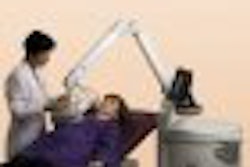Will ultrasound become as ubiquitous as the stethoscope? Is it in the midst of a renaissance? Are other specialists stealing ultrasound away, or are radiologists letting it go? Will ultrasound continue to dwell in the shadow of CT and MR, or will it dazzle with technological advances? According to experts at the 2006 Society of Radiologists in Ultrasound (SRU) meeting in San Francisco, the answer is all of the above.
Dr. John Cronan from Rhode Island Hospital and Brown University in Providence kicked off a discussion on the future of sonography with a sobering overview of its current state. Cronan described ultrasound as the new stethoscope -- common, widely used, and poorly utilized, especially by nonradiologists.
"We're dealing with an environment where everybody thinks they can perform ultrasound," he said. So are radiologists fighting the good fight to keep ultrasound to themselves? Not really.
"Quietly, the radiology community is letting ultrasound slide," Cronan said. "Radiologists are focusing on high-end procedures."
By high-end, he meant CT and MR, which are the big moneymakers in imaging. Cronan acknowledged that several factors influence imagers and their lack of enthusiasm for sonography. In addition to having a low reimbursement rate, it is a time-intensive exam that requires physician input.
"Ultrasound is not a spectator sport," he said. "You just can't sit there in your dark room, never talk to the patient, and expect (to produce) a good (ultrasound) report."
Other obstacles that the ultrasound community faces: fewer residents train in ultrasound, and even if they wanted to become ace sonologists, there's a lack of experts to provide the education. To address this issue, many radiologists now train technologists to perform and interpret ultrasound exams. But those technologists have been known to leave the imaging facility and take up high-paying jobs at nonradiology practices, Cronan said. As other physicians begin wielding transducers in their office-based practices, radiologists are losing control of the modality as a diagnostic tool, he added.
These other specialists, Cronan note, are attracted to ultrasound for the same reasons that radiologists seem willing to let it slip away: low-cost, ease of operation (although operating it well is another matter), moderate reimbursement (at least for nonradiologists), and a lack of rigorous credentialing.
Again, what does not appeal to North American radiologists serves as bread-and-butter imaging for radiologists in other countries, said Dr. Harvey Neiman, executive director of the American College of Radiology (ACR). Following Cronan's talk, Neiman outlined some of the ways that ultrasound was affected by offshore outsourcing.
U.S. radiologists in particular have the reputation of wanting to concentrate on more sophisticated, creative imaging. That leaves a host of less interesting studies that are being sent for overseas reads. There are certainly pros and cons to the latter for North American radiologists, Neiman said.
On the upside, foreign doctors who meet the requirements of U.S. board certification are few and far between so it's unlikely that U.S. radiologists will be out of a job. Also, some technical difficulties still remain with transmitting video and images overseas, he said.
On the downside, some foreign physicians are well-versed in ultrasound imaging, often because CT and MR are not readily available. In the overseas market, a paycheck that many U.S. radiologists would laugh at, would be considered a decent salary, Neiman said. Finally, there is the practice of "ghosting," whereby exams are read by less-skilled physicians at an offshore facility, then signed off by the one radiologist who is compliant with American Board of Radiology standards.
Neiman warned that ultrasound specialists should not look to government regulation to stem the outsourcing tide. "The reality is that regulations breakdown, leaving the industry even weaker," he said, citing the airline industry as an example.
So what should radiologists do? Show the medical community that they are a "value-added" specialty, Neiman said. This can mean sticking with "upmarket" sophisticated imaging techniques or building up volume with "downmarket," screening programs, he explained.
Sustaining technology
One of the market forces that will drive ultrasound advancement is what Neiman and other SRU presenters called sustaining technological advances. A very basic example would be the switch from B-mode scanners to real-time to 3D ultrasound, Neiman said.
It is this type of advancement that will make ultrasound more appealing to radiologists and bring it back to the imaging arena, according to several vendor representatives who spoke at the SRU meeting.
Jim Brown, senior director of clinical and technical marketing for Philips Medical Systems, said ultrasound has already begun moving out of diagnostics and into other areas of patient care -- the surgical suite and the emergency department, for example.
Along with this expansion, ultrasound techniques will gain ground, he said. "Volumetric imaging is an example of 'upmarket' ultrasound that only radiologists are qualified to do," he said.
Simply producing the sonographic information won't be enough; radiologist expertise will come into play for enhanced workflow, advancing visualization, and utilizing new quantification methods.
Richard Chiao, Ph.D., vice president of Innovation at Siemens Medical Solutions, stressed that ultrasound is the only imaging modality that can be used repeatedly without detrimental side effects. He predicted that in the new model of personalized and preventative medicine, ultrasound will be used for screening, diagnosis, treatment, and follow-up.
Other technical advancements that will make ultrasound a powerful weapon in the hands of radiologists are opticoacoustics, elasticity imaging, phase aberration correction, and 3D volume flow, said Dr. Jonathan Rubin, Ph.D., from the University of Michigan in Ann Arbor.
Opticoacoustics will combine light contrast with ultrasound speed and anatomic definition, making it ideal for functional imaging, Rubin said. Elasticity imaging, which measures strain, has already made advances in the heart, he added.
Rubin described 3D volume flow as being a "pain" to master, yet ultimately easier to work with than Doppler imaging. Phase aberration correction will allow sonographers to scan through bone, and will be particularly advantageous in obese patients. Currently, ultrasound is a weak modality in overweight people.
"The limits of ultrasound will go away," Rubin said. "Intellectually, the future looks really bright. If we are smart enough, we'll keep doing this (and not) lose interest."
Contrast-enhanced ultrasound is another major advancement that will make the modality a major player, said Dr. Barry Goldberg from Thomas Jefferson University in Philadelphia. He said he expected ultrasound contrast agents to be approved for widespread use in the next decade -- and resistance will be futile.
"When CT and MRI contrast agents were first introduced, nobody wanted to work with them," Goldberg recalled. "Now they are part of the standard protocol. The same will hold true for ultrasound."
Applications for contrast-enhanced ultrasound include liver lesion characterization such as hemangiomas, focal nodular hyperplasia, and renal hemorrhaging, he said. As an added bonus, Goldberg predicted that "(contrast ultrasound of the liver) is not going to be done by internists so routinely."
According to Goldberg, the following are contrast agents to look forward to:
- Tissue-specific agents
- Agents for tumor staging such as lymphosonography
- Agents to guide ultrasound treatment of tumor vessels
- Contrast for tumor perfusion imaging
- Therapeutic contrast agents
- Fusion of contrast ultrasound with other modalities such as US/CT to guide brachytherapy
Disruptive technology
Neither Rubin nor Neiman had a particularly sunny outlook for what Neiman called "disruptive technological advances." They cited portable and miniaturized ultrasound as examples of disruptive technology. In the case of the former, the more convenient ultrasound becomes, the more likely other specialists will start using it, Neiman said. Rubin even predicted a near-future scenario in which a pregnant woman will buy a disposable ultrasound unit at local drugstore to keep tabs on her fetus at home.
"This is going to happen and it's going to happen independently of radiologists, no matter how good we are," he warned.
But the miniaturization of ultrasound doesn't necessary spell disaster, according to Terri Bresenham, vice president and general manager for diagnostic ultrasound and IT at GE Healthcare.
First, miniaturization will greatly improve ultrasound's proficiency, leading to more efficient workflow, she said. Second, miniaturization can be paired with advanced imaging technologies. More advanced imaging requires experienced radiologists, Bresenham explained.
"I think this is the beginning of a renaissance period for ultrasound," she said.
Making ultrasound systems more compact and competent will improve the high-end systems, she said. Nonradiologists will still be limited in their sonographic capabilities, and will have to refer their patients to imaging specialists for more sophisticated imaging.
'Saving ultrasound for radiologists'
Dr. Beverly Coleman and Dr. James Borgstede wrapped up the SRU session with their thoughts on where ultrasound will be in the year 2016.
Coleman, who is from the University of Pennsylvania Medical Center in Philadelphia and serves as president of SRU, said the academic radiologist will continue to act as a clinician, an educator, and a researcher. As a clinician, this radiologist will not only have to perform ultrasound studies, but must have a CD ready with the 3D volume images ready to go for the patient to take back to the referring physician. This collaborate environment will have to be cultivated and maintained in particular with specialists who chose not to do their own imaging, she said.
The portability of ultrasound will supplement workflow, but it may also mean more cases so radiology residents will have to be well-versed in the modality, she said. The research front will include maintaining high standards for sonographic imaging and lobbying for standards with the appropriate agencies, all in the name of maintaining "the art and science of ultrasound," she said.
On that same note, Borgstede, the president of the ACR, delineated ways that private practice radiologists can get involved:
- Stop the economic motivations that lead to self-referral.
- Support complete exams versus "boutique" or fragmented credentialing.
- Take the offensive -- talk to patients and emphasize the skills of a radiologists; market practices to referring doctors.
Finally, accept that new frontiers in ultrasound may require dramatic change on the part of practitioners. "Some people might say 'therapy is not diagnostic ultrasound.' But who else is better equipped than us to look at the safety and the technology in this area?" Borgstede asked. "Can we save ultrasound for radiology and radiologists? Yes, but not as we currently know it."
By Shalmali Pal
AuntMinnie.com staff writer
October 27, 2006
Related Reading
Doctors may be able to hear skin cancer spread, October 18, 2006
Plastic surgeons pick US for resetting broken noses, October 9, 2006
Ob/gyn ultrasound yields thorny legal issues, July 31, 2006
Copyright © 2006 AuntMinnie.com



















